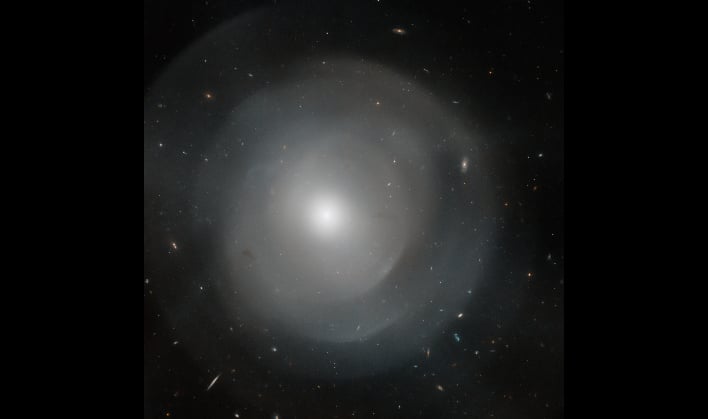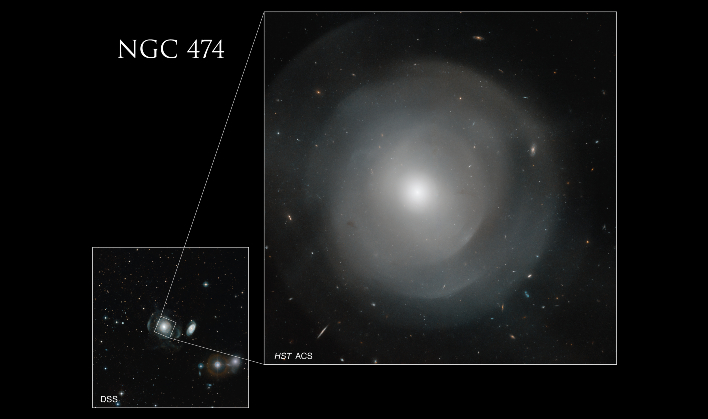Stunning Hubble Image Shows Gigantic Ellipitcal Galaxy Surrounded By Strange Shells

Elliptical galaxy NGC 474 traverses about 250,000 light-years across, which is 2.5 times larger than our own Milky Way galaxy. Astronomers have theorized that the series of complex layered shells could be the aftereffects of the large galaxy absorbing one or more smaller galaxies. The cannibalized galaxies thus create waves that form the shells, much like a pebble creates ripples on a pond when dropped into water.
NGC 474 has also emboldened an increasing consensus that at least some elliptical galaxies have formed in the recent past. It is also believed that the outer halos of most large galaxies are not really smooth but have complexities caused by frequent interactions with smaller nearby galaxies. It is thought that the halo of our own Milky Way galaxy is one example of such unexpected complexity.
Dissimilar to the majority of elliptical galaxies, only about 10% of them have shell structures. These shelled ellipticals typically reside in relatively empty space. This could be due to them having cannibalized their neighbors.
The image was created using data acquired from Hubble's Advanced Camera for Surveys (ACS). ACS was installed on the space telescope in 2002, and was primarily designed to survey large areas of the sky at visible and red wavelengths. It performs with 10 times greater efficiency than the earlier premier Hubble camera, the Wide Field Planetary Camera 2 (WFPC2).
Additional gap-filling data was garnered by Hubble's Wide Field and Planetary Camera 2 and Wide Field Camera 3. According to a NASA blog, "The color blue represents visible light while the color orange represents near infrared light."
Top Image Courtesy of NASA


